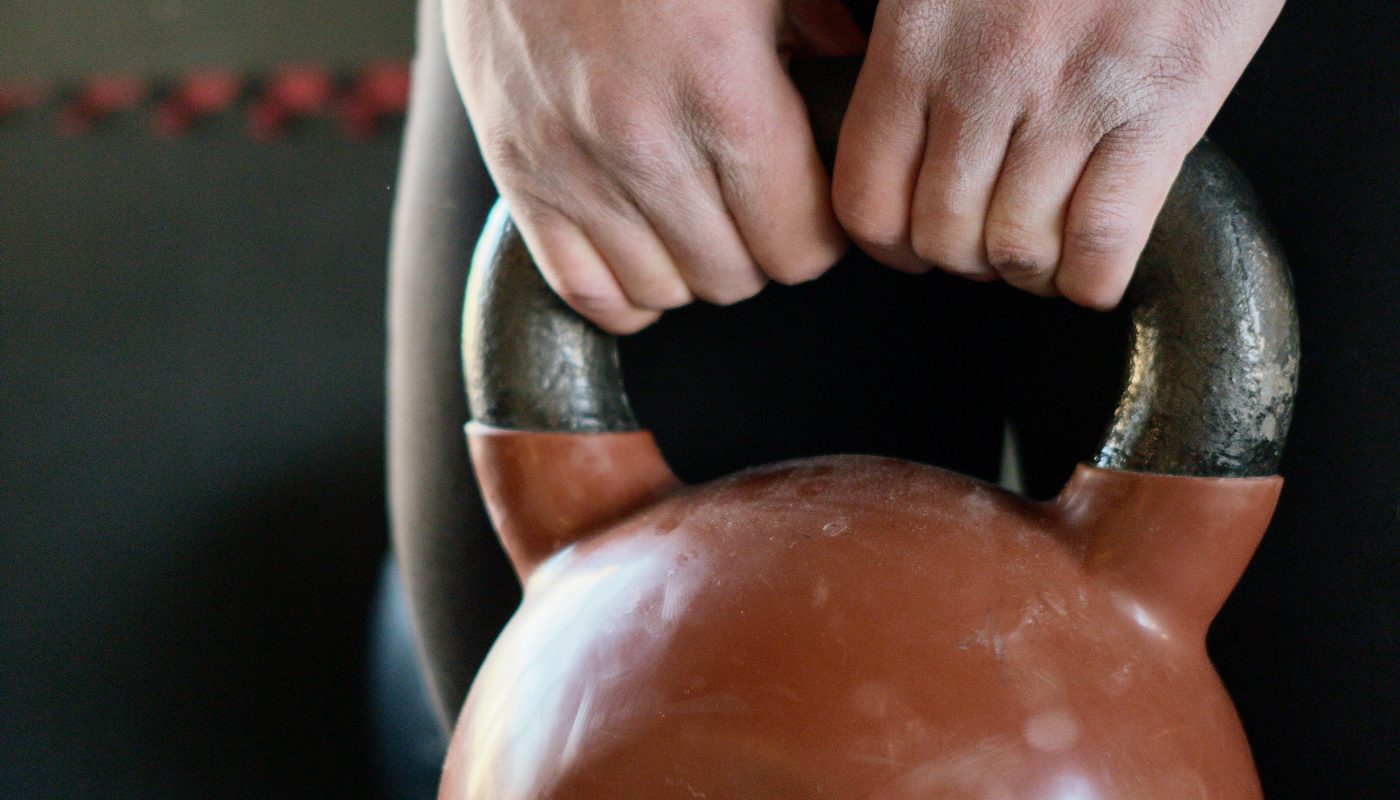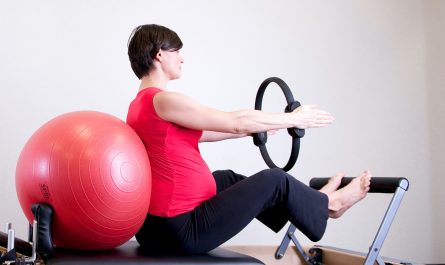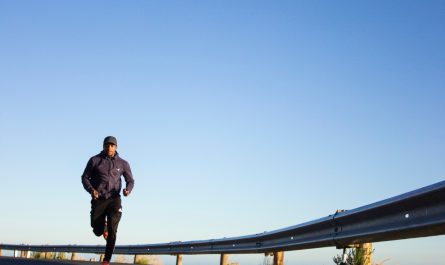Workout Description
Physique development and fitness shouldn’t just be about the way you look. Performance matters too.
That’s why standard cardio such as a treadmill and riding an elliptical may not always be the answer. Having a challenge that can test your ability to move and burn calories can help you improve overall fitness.
This 45-minute session is the answer for fitness-minded people looking to step up their game. This workout can be used for fat loss and endurance improvement. It can be performed after your weight training workout or on an active rest day.
Related: 4 Cardio Machine Workouts to Maximize Fat Loss
Equipment Needed:
This is going to be a short list of items you need to make this workout happen. All you need are the following:
- One Kettlebell
- Your Body
- A Clock
- Open Space (Mat Optional)
That’s it. The simplicity of the workout is what also makes it effective. If you have a kettlebell at home, then you can do this one anytime you like. If you go to a gym, then grab a kettlebell, find an open space, and get after it. Having a clock or stopwatch nearby would be handy too.
Related: Full Body Kettlebell at Home (or Anywhere) Circuit Workout
What Size Kettlebell Should You Use?
There is absolutely no reason to test your strength with this workout. You’re going to be performing a lot of reps in a short amount of time. So, the kettlebell you choose for this workout should be light to medium. By the time this is over, that light weight will feel a lot heavier. So, the muscles will be put to the test.
The Principle of the Workout
This workout will be about performing as many reps as possible within a certain time limit. The exercises will alternate between using your bodyweight and adding the kettlebell. You get 60 seconds to perform as many reps as possible with good form. After 60 seconds has passed, you get 20 seconds to transition from one exercise to the other.
By the time you complete one circuit, 13 minutes will have passed. You get two minutes to rest before repeating the circuit for a second time. After you complete the circuit for two rounds, the remainder of your time should focus on cool down movements.
Related: 3 Reasons Why You Should Include Kettlebells In Your Workout
Kettlebell Exercises
Kettlebell Halo
The first movement is going to prepare the entire shoulder girdle for the work to come. The halo works the delts, rotator cuff, traps, arms, and even a little upper back.
The main point to remember is to keep the chin up and not let the kettlebell go too far away from your head. The hips should be stationary and your core should remain tight throughout. Allow the shoulders to move while you’re taking the weight around the circle. You’re moving the kettlebell around your head, not your head around the kettlebell.
Kettlebell Swing
If there was a Kettlebell 101, the kettlebell swing might be the first exercise you learn in that class. If you’re new to it, it may look like a standard front raise, but there is more to it than that. This could be a full body exercise if you do it right.
The kettlebell should actually go down between the knees or lower thigh at the bottom. While hinging at the hips and keeping the core engaged, swing the weight up. Your arms should only act as a lever or straps to the kettlebell. Once the weight reaches its highest point, do your best to control the movement on the way back down.
Kettlebell Row
If you’ve ever done a one-arm dumbbell row with a dumbbell, this is the same principle. It will feel slightly different because the weight is below the handle. For the single arm version, bend over slightly and place your non-working arm on your knee or something close to you like a chair.
Pull the weight up as far as you can while contracting the back muscles. Let the weight down slow and feel a full stretch before pulling again. Since this is a single arm movement, you will switch arms after 30 seconds so both sides feel the work.
Goblet Squat
The kettlebell is going to be held at shoulder height for this next exercise. There are debates about how the weight should be held. Some feel you should hold the kettlebell by the sides of the handle, also known as the horns. Others feel they should hold the bottom of the weight.
My advice is going to be hold it where you feel most comfortable. As long as you don’t drop the weight and you can focus on squatting, then you’re good to go.
Speaking of squatting, don’t stop short when going down. Squat down until the top of your thighs are parallel with the floor. Shortchanging it doesn’t help yourself or anyone else. I would rather you get five good reps than 15 bad ones. Squat down slow, then drive yourself up as quickly as possible while maintaining control of the kettlebell.
Related: The 5 Best Exercises That Improve Your Squat Technique
Kettlebell Single Leg Deadlift
Unilateral training is very important, but it’s often neglected – especially in the lower body. That’s why you’ll focus on single leg deadlifts.
If the kettlebell is in your left hand, then keep your left leg back and work on the right one. Lower the weight down slowly with the left hand while feeling a stretch in the right hamstring. Once 30 seconds has passed, switch hands and legs. The right hand will hold the weight while the left leg is planted.
If you can’t touch the floor with the kettlebell, go as far down as you safely can while feeling a stretch. If going down to the floor is easy, then stand on a step to increase the range of motion.
Warming Up
Counting kettlebell and bodyweight movements, there are ten exercises total. Start out by performing 10 reps of each movement. That is 100 reps in all. Keep the rest between each exercise short, but don’t go too quickly. There are two reasons for this warm-up phase.
- You’re preparing your body for the work to come. Going through the motions can prepare the muscles, joints, tendons, and ligaments for the work to come. This is also a chance to lock yourself in mentally.
- You’re working to master form with each of these exercises. Your execution of each exercise should be consistent from the beginning to the end. Take this time to feel the muscles working as you know they should.
Related: The Best 15-Minute Warm-Ups
45-Minute Kettlebell and Bodyweight Workout
A note on rest times: Take as much time as needed between each exercise. A good place to start is 30-60 sec. At the end of your first circuit, rest of 2 minutes, then repeat for one more round (for a total of two rounds).
| Exercise | AMRAP |
|---|---|
| Kettlebell Halo | 60 sec (30 sec each direction) |
| Push Up | 60 sec |
| Kettlebell Swing | 60 sec |
| Lying Leg Raise | 60 sec |
| Kettlebell Row | 60 sec (30 sec each side) |
| Abdominal Crunch | 60 sec |
| Kettlebell Goblet Squat | 60 sec |
| Bodyweight Jump Squat | 60 sec |
| Kettlebell Single Leg Deadlift | 60 sec (30 sec each side) |
| Alternating Bodyweight Lunge | 60 sec |
Cool Down
The warm-up should take no longer than 10 minutes. If you count the two circuits and rest time, that is 26 minutes more for a total of 36 minutes. That leaves you around nine minutes to stretch again, take deep breaths, and allow your body temperature and heart to come back down to normal levels before you proceed with your day.
Perform this session three times a week as your main form of cardio for eight weeks, and you should see serious improvements in the way you look, perform, and feel – all with just a kettlebell, your body, and a little open space.




